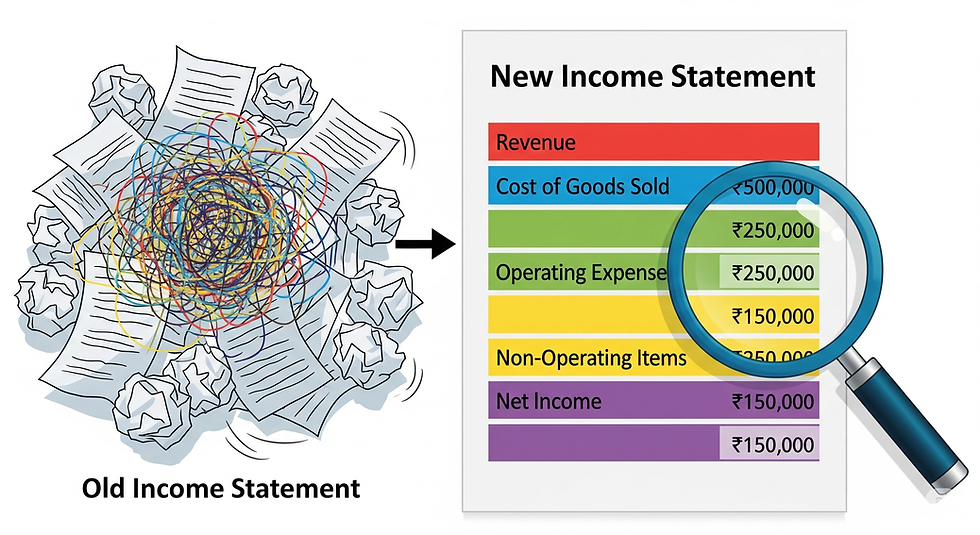The Companies (Indian Accounting Standards) Second Amendment Rules, 2025: What You Need to Know
- GDV Consultancy
- Aug 22
- 2 min read

Executive Summary
The Ministry of Corporate Affairs (MCA) has notified the Companies (Indian Accounting Standards) Second Amendment Rules, 2025, introducing significant updates to India’s financial reporting framework. These changes align Indian GAAP more closely with international standards, improve transparency, and address emerging issues in accounting practices. This article breaks down the amendments, their impact on companies, and actionable steps for compliance.
Key Highlights of the Amendment
1. Alignment with International Standards
Updates reflect recent IFRS developments to ensure Indian companies remain globally comparable.
Greater clarity in recognition, measurement, and disclosure requirements.
2. Major Changes in Ind AS
Revenue Recognition (Ind AS 115): Expanded guidance on variable consideration and contract modifications.
Financial Instruments (Ind AS 109): Revised rules on expected credit loss (ECL) provisioning, especially for NBFCs and banks.
Leases (Ind AS 116): Additional disclosure requirements for lease concessions.
Business Combinations (Ind AS 103): Clarifications on treatment of common control transactions.
3. Industry-Specific Implications
Financial Services: Stricter ECL provisioning could increase provisioning costs.
Real Estate: Enhanced revenue recognition guidance impacts contract structuring.
Manufacturing & Retail: Lease accounting updates affect balance sheet leverage ratios.
Data & Insights
Area of Change | Old Requirement | New Requirement (2025) | Expected Impact |
Revenue Recognition | Limited guidance on variable consideration | Explicit rules on contract modifications & rebates | More consistent revenue reporting |
Financial Instruments | ECL applied with flexibility | Stricter forward-looking ECL model | Higher provisioning for banks/NBFCs |
Leases | Basic disclosures | Detailed lease concession disclosures | Greater transparency |
Business Combinations | Limited guidance on restructuring | Specific rules for common control | Reduced structuring arbitrage |
Real-World Implications
Case Study – Banking Sector: A mid-sized NBFC may see a 15–20% increase in provisioning due to stricter ECL models.
Case Study – Real Estate: A listed real estate developer will now need to defer recognition of revenue until performance obligations are more clearly met, reducing upfront revenue recognition.
Conclusion
The Companies (Indian Accounting Standards) Second Amendment Rules, 2025 bring Indian accounting closer to global benchmarks while ensuring greater reliability and transparency in financial reporting. Businesses must act quickly to assess impacts, update policies, and train staff. Early preparation will not only ensure compliance but also strengthen investor confidence in financial statements.
👉 Call-to-Action: Start your amendment readiness assessment today—engage your finance team and auditors to avoid last-minute surprises.


Comments